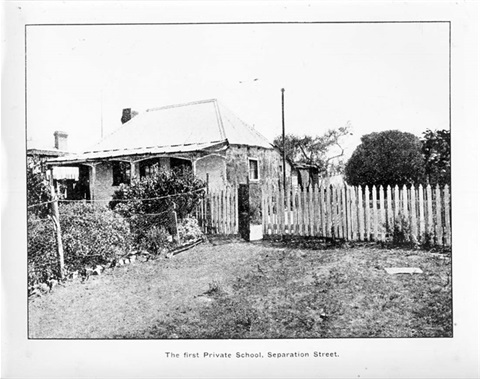Separation Street, Northcote

Separation Street, Northcote came into existence in July 1851 when property owner Peter Macarthur sold a few blocks of land down the side of Northcote hill. With no access to the blocks he created a small lane to provide access, naming it Separation Street in honour of the recent separation between New South Wales and Victoria. To maximise the amount of land for sale he deliberately kept the lane as narrow as possible.
Amongst the earliest purchasers of land in Separation Street were German settlers. They settled mainly on the flat part of land at the base of the hill and established market gardens there. The lane became unofficially known as German lane around this time.
A small parcel of land was put aside for the establishment of a cemetery and a hotel was built on the corner of High Street and Separation Street. A little later the discovery of high quality clay in Separation Street led to the establishment of the Northcote Brickworks.
By the late 1890s the German settlers had left Separation Street and Chinese immigrants had taken over their gardens.
As the brickworks grew it made life unpleasant in Separation Street, the smoke from the kilns and the dust raised by the carters' wagons upset local residents and the carts also damaged the steep road up the hill. The Council complained to the brickworks but neither felt inclined to push the matter.
A grand old house, Maesbury, had existed on the south side of Separation Street and in 1904 it became a school run by the Sisters of the Good Samaritan. It closed a year later, only to be re-established in 1933.
Just west of the school the Northcote Council established a market garden which supplied plants for the parks and gardens around the city. It was later removed and the land used to build the current Northcote Library.
Lemon, Andrew (1983). The Northcote Side of the River. North Melbourne: Hargreen.